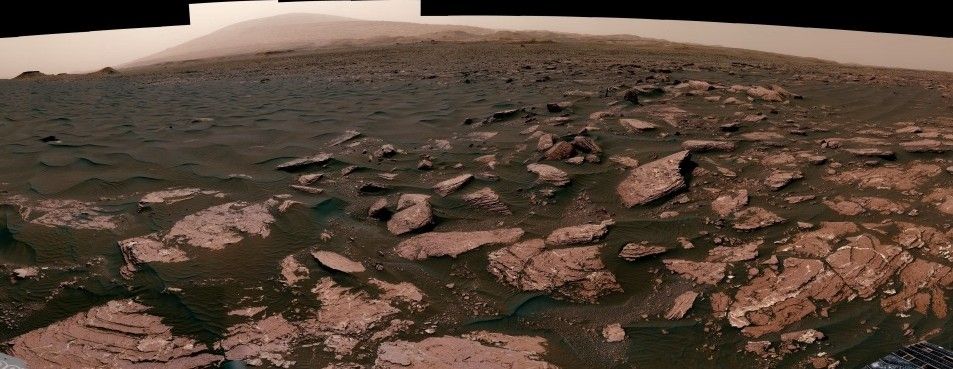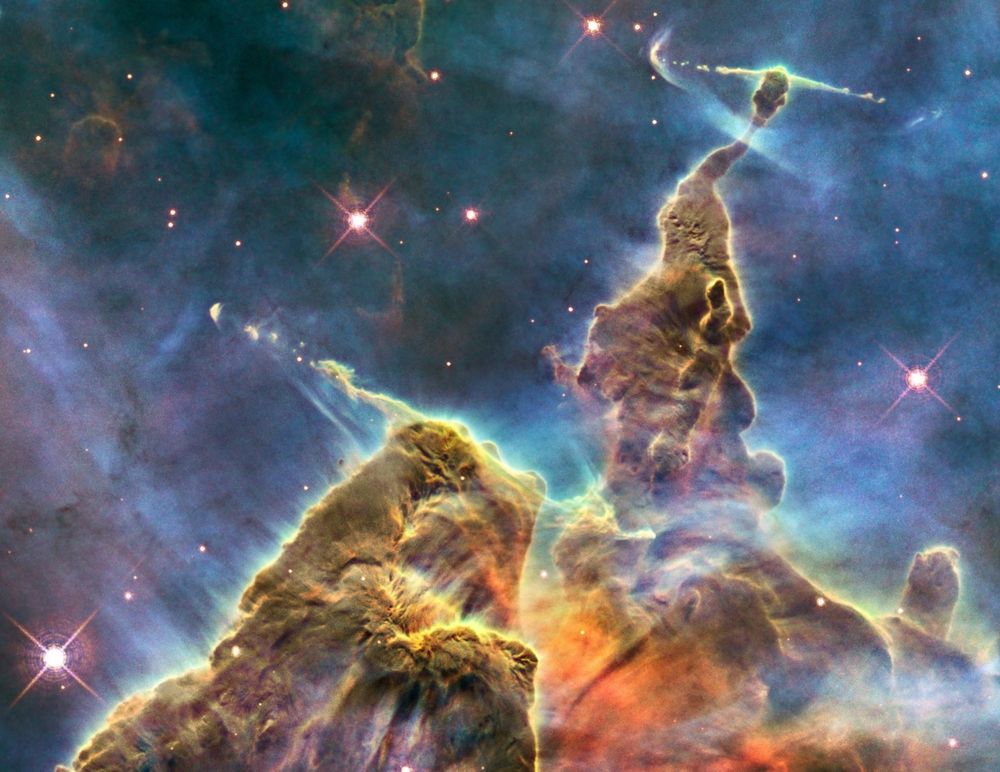

Brighter stars standing out due to JWST's characteristic pattern of diffraction spikes.
Image Credit: #NASA, #ESA, #CSA, STScl, Klaus Pontoppidan, Alyssa Pagan.
🔭 #Astronomy #Space
Image credit: Stanislav Volskiy
🔭 #Astronomy #Space #NASA

Image credit: Stanislav Volskiy
🔭 #Astronomy #Space #NASA
Credit: #NASA, #JPLCaltech, MSSS
🔭 #Space #Mars #Astronomy

Credit: #NASA, #JPLCaltech, MSSS
🔭 #Space #Mars #Astronomy
Credit: #NASA, #ESA, Jesús Maíz Apellániz
🔭 #Astronomy #Space

Credit: #NASA, #ESA, Jesús Maíz Apellániz
🔭 #Astronomy #Space
Image credit: Juan Montilla
🔭 #Astronomy #Space

Image credit: Juan Montilla
🔭 #Astronomy #Space
Credit: #NASA, JPL-Caltech, MSSS, #CuriosityRover
🔭 🧪 #Space #Astronomy

Credit: #NASA, JPL-Caltech, MSSS, #CuriosityRover
🔭 🧪 #Space #Astronomy
Image Credit: Drew Evans
🔭 #Space #Astronomy #NASA

Image Credit: Drew Evans
🔭 #Space #Astronomy #NASA
Unfortunately the planet is currently hidden in the glare of the Sun, but Alan Friedman compiled a great image sequence of a similar vanishing in 2009. 🧪🔭
avertedimagination.com/img_pages/6_...
Unfortunately the planet is currently hidden in the glare of the Sun, but Alan Friedman compiled a great image sequence of a similar vanishing in 2009. 🧪🔭
avertedimagination.com/img_pages/6_...
Credit: CTIO, NOIRLab, DOE, NSF, AURA
🔭 #Astronomy #Space #NASA

Credit: CTIO, NOIRLab, DOE, NSF, AURA
🔭 #Astronomy #Space #NASA
Image credit: Rabeea Alkuwari
🔭 #Astronomy #Space #NASA

Image credit: Rabeea Alkuwari
🔭 #Astronomy #Space #NASA
The #comet was observed with the SoloHI instrument from the U.S. Naval Research Laboratory.
The encounter happened on 14-25 January, while Solar Orbiter was heading toward #Venus and the comet coincidentally swung by the #Sun.
🔭 🧪
The #comet was observed with the SoloHI instrument from the U.S. Naval Research Laboratory.
The encounter happened on 14-25 January, while Solar Orbiter was heading toward #Venus and the comet coincidentally swung by the #Sun.
🔭 🧪
Credit: #ESA / #Hubble & #NASA, S. J. Smartt, C. Kilpatrick
🔭 #Astronomy #Space

Credit: #ESA / #Hubble & #NASA, S. J. Smartt, C. Kilpatrick
🔭 #Astronomy #Space
Image credit: #FireflyAerospace
🔭 #NASA #Astronomy #Space

Image credit: #FireflyAerospace
🔭 #NASA #Astronomy #Space
Image credit: Brian Hopkins
🔭 #NASA #Astronomy #Space

Image credit: Brian Hopkins
🔭 #NASA #Astronomy #Space
Credit: IG @EkantV (link below)
🔭 #Space #Astronomy

Credit: IG @EkantV (link below)
🔭 #Space #Astronomy
Credit: #NASA, JPL-Caltech
🔭 #Astronomy #StPatricksDay #Space #Celtic

Credit: #NASA, JPL-Caltech
🔭 #Astronomy #StPatricksDay #Space #Celtic
Credit: #NASA, #ESA, STScl, M. Livio
🔭 #Space #Astronomy

Credit: #NASA, #ESA, STScl, M. Livio
🔭 #Space #Astronomy
Galaxy cluster G165.
Imagine if it were reverse, being able to look at earth at three different points in time. Mind continues to be blown.
Credit: #NASA, #ESA, CSA, STScI
🔭 #Space #Astronomy

Galaxy cluster G165.
Imagine if it were reverse, being able to look at earth at three different points in time. Mind continues to be blown.
Credit: #NASA, #ESA, CSA, STScI
🔭 #Space #Astronomy
So you have Johann to thank for all the inuendoes.
Credit: #NASA, JPL-Caltech
🔭 #Space #Astronomy #Uranus

So you have Johann to thank for all the inuendoes.
Credit: #NASA, JPL-Caltech
🔭 #Space #Astronomy #Uranus
Winter isn't cold here, but the clouds really do dominate the sky.
Winter isn't cold here, but the clouds really do dominate the sky.
Credit: CTIO, NOIRLab, DOE, NSF, AURA
🔭 #Astronomy #Space #NASA

Credit: CTIO, NOIRLab, DOE, NSF, AURA
🔭 #Astronomy #Space #NASA
🔭

🔭
Image credit: Alex Lin (Chilescope)
🔭 #Space #Astronomy #NASA

Image credit: Alex Lin (Chilescope)
🔭 #Space #Astronomy #NASA
Credit: #NASA, JPL-Caltech, SwRI, ASI, INAF, JIRAM
🔭 #Astronomy #Space

Credit: #NASA, JPL-Caltech, SwRI, ASI, INAF, JIRAM
🔭 #Astronomy #Space

